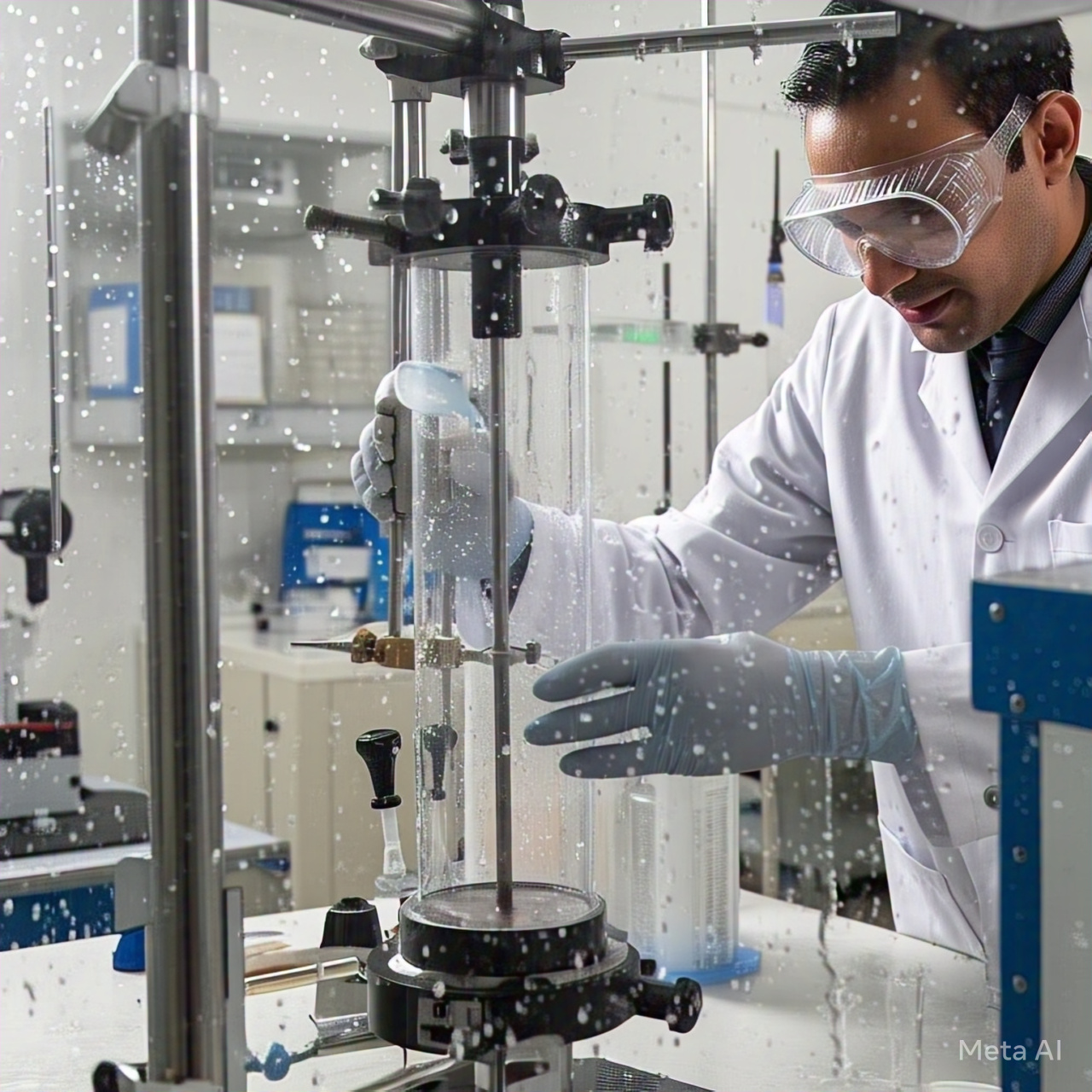The California Bearing Ratio (CBR) test is a widely used method for assessing how well subgrade soil can support load. It’s a key tool in the design of pavements, road construction, and other load-bearing infrastructure like airport runways and parking lots.
However, conducting the CBR test procedure in wet weather brings a set of challenges that can affect the quality and interpretation of results. With saturated soils, poor access, and environmental factors at play, it’s essential to adapt your approach to maintain reliable data.
Here’s what to expect — and what to do.
1. Excess Moisture Lowers CBR Values
Rain increases the moisture content in the soil sample, often reducing the CBR value. But lower numbers don’t always mean weak ground. The soil may perform well under normal conditions — the test is simply reflecting temporary saturation.
What to do:
If the site is fully saturated, delay testing where possible. Otherwise, document the soil conditions and carry out the California bearing ratio test carefully. Notes on test setup and weather will help contextualise results and support balanced design decisions.
2. Accessing the Site Can Be Difficult
Waterlogged sites are prone to surface disturbance, making it hard to maintain undisturbed areas for testing. Once churned up, subgrade soil loses its natural strength profile.
What to do:
Use track mats or temporary access solutions to stabilise the area. Avoid compacting or disturbing the test point. Accurate testing relies on proper site preparation and following the CBR test procedure closely.
3. Safety Comes First
Standing water, soft ground, and low visibility increase the risk of slips, trips, or equipment issues.
What to do:
If conditions are unsafe, reschedule the test. No data is worth compromising site safety.
4. Results Must Be Interpreted with Care
Testing saturated soil often leads to conservative design outcomes — thicker layers, imported materials, or excessive compaction requirements. While cautious, this can drive up project costs unnecessarily.
What to do:
Supplement field results with lab testing where you can assess the optimum moisture content and maximum dry density under controlled conditions. These figures can confirm whether low field values reflect true weakness or temporary waterlogging.
5. Protecting Equipment Is Essential
Wet conditions are tough on gear — particularly dial gauges, CBR pistons, and the load frame. Corrosion, calibration issues, or general wear can follow if equipment isn’t protected.
What to do:
Carry waterproof covers, dry cloths, and spare parts. Clean and dry all equipment after use to avoid rust and damage.
Brief Overview of CBR Testing for Context
The California bearing ratio test measures the pressure required to penetrate a compacted soil sample with a standard piston, comparing it to a known standard (typically standard crushed rock). It’s used to evaluate subgrade strength and inform pavement or foundation design.
Real-World Example (Theoretical Scenario)
Imagine you’re overseeing the early stages of an industrial site in North Yorkshire. After a week of rain, the clay subgrade is saturated. Initial CBR values from field tests are low — too low to meet the spec. Rather than overdesign, your team sends a duplicate sample to the lab. There, the material tests well at its optimum moisture content and maximum dry density. The original pavement design is confirmed without additional costs or imported materials.
Practical Testing Tips for Wet Sites
- Photograph surface conditions before testing
- Use moisture probes to assess saturation
- Avoid retesting on disturbed ground
- Divert standing water before setup
- Take duplicate samples for lab analysis
- Keep spares for key equipment
- Prioritise high ground for early testing
- Follow the proper CBR test procedure for consistency
Common Issues and How to Deal With Them
If results are unexpectedly low, the ground may be oversaturated. Retesting when drier, or verifying with lab tests, often resolves this. If the test area churns up during setup, relocate and protect the new spot. Inconsistent readings can result from uneven compaction, excessive moisture, or improper surcharge weight — all of which can be corrected with better site prep and adherence to procedure.
How Wet Testing Affects Design and Costs
Misinterpreting wet weather CBR test results can lead to overdesign. Engineers may increase pavement thickness or reject suitable materials based on low field readings. Understanding the impact of soil conditions and comparing them with controlled lab results prevents overspending and delays.
Industry Standards and Testing Guidelines
In the UK, CBR testing is typically carried out in line with BS 1377 Part 4, which outlines the proper procedures for soil strength testing. For highway and pavement design, guidance can also be found in the Design Manual for Roads and Bridges (DMRB). Following these standards ensures your testing is consistent, reliable, and recognised by engineers, contractors, and local authorities.
If you’re looking for experienced support or advice, CBR Testing UK provides nationwide services in line with these standards.
Quick Answers: CBR Testing in Wet Conditions
Can I rely on CBR results taken during or after heavy rain?
You can, but they must be interpreted in context. Saturated conditions often produce lower CBR values, which may not reflect the soil’s performance under normal conditions.
Do I need to carry out lab testing as well as field testing?
It’s strongly recommended if your field test is done in poor weather. Lab testing under controlled conditions (at optimum moisture content and maximum dry density) provides a clearer picture.
Will wet-weather delays affect my project timeline?
Delays can happen, but they’re often worth it. Rushing a test in bad conditions may result in inaccurate data, costly overdesign, or even rework later on.
Quick Checklist: CBR Testing in Wet Conditions
- Check for pooling water and drainage issues
- Record environmental and soil conditions
- Use ground protection to avoid surface disturbance
- Protect and dry all test equipment
- Follow CBR test procedure carefully
- Collect duplicate soil samples for lab testing
- Compare field data with optimum moisture content and maximum dry density
- Reference BS 1377 and DMRB where applicable
Final Thoughts
Wet weather doesn’t have to derail your testing schedule — but it does require more planning and flexibility. By understanding how moisture affects CBR values, using both field tests and lab tests, and following recognised industry standards, you can gather meaningful data that supports accurate and efficient design.
Careful planning now means fewer delays, fewer costly changes, and better outcomes for your project.





